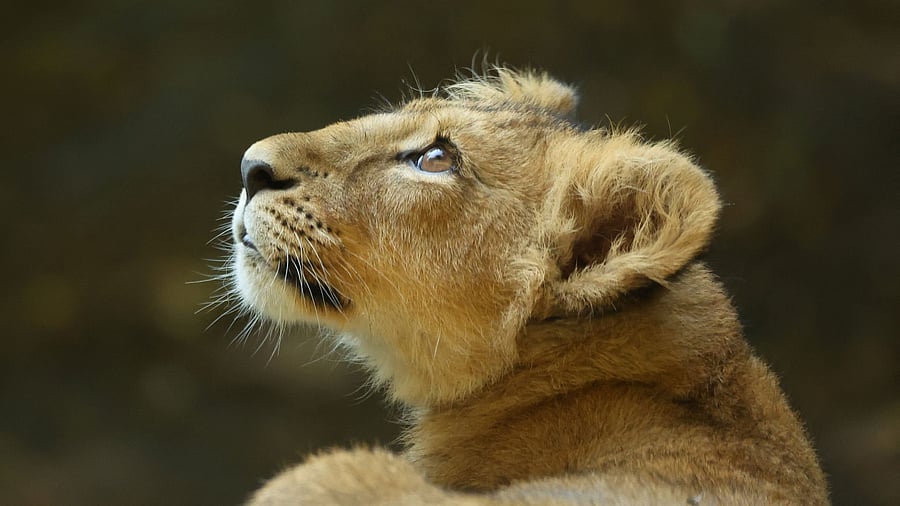
An Asiatic lion cub.
Credit: Reuters Photo
Ahmedabad: The two-phase census of Asiatic lions, said to be the biggest till date with the lions' landscape having increased beyond the protected areas, concluded on Tuesday.
The forest officials are hopeful that the result would be as per the trend for the last many years during which the population of big cats has risen significantly from the brink of extinction.
"We have concluded the exercise of collecting data today. I hope in the next one or two weeks, we should be able to feed the data, analyse them scientifically and logically, and release them," AP Singh, principal chief conservator of forests, told DH.
The 6th lion population estimation was joined by over 500 officials and wildlife enthusiasts from the country as well as experts from abroad. Officials said that an area of approximately 35,000 sq km was covered which was divided into eight regions, 32 zones and 112 sub-zones spread across 58 talukas of 11 districts of Saurashtra.
Districts such as Amreli, Junagadh, Gir Somnath, Bhavnagar, Rajkot, Morbi, Surendranagar, Devbhoomi Dwarka, Jamnagar, Porbandar and Botad were mapped where lions were spotted for the past several years.
Officials said that the exercise covered protected areas, coastal as well as revenue areas for the first time as lions have moved beyond their protected habitat for quite some years now.
The forest department of the Government of Gujarat conducts a lion census every five years. The first lion census was conducted in Gujarat in 1936.
Asiatic lions are sub-species of Panthera leo, which were once found in Asia minor-Iran, Iraq and India. In the past century, these big cats disappeared from much of its distribution range and were restricted to Gir forest.
In the last census, 2020, its population was reported to be at 674, more than twice since 1936, when they were counted for the first time. From near extinction, the lions are thriving in Saurashtra region of Gujarat thanks to a number of conservation efforts undertaken by the government as well as wildlife enthusiasts.
"We are hopeful that the trend of rising population continues even this time," Singh added.